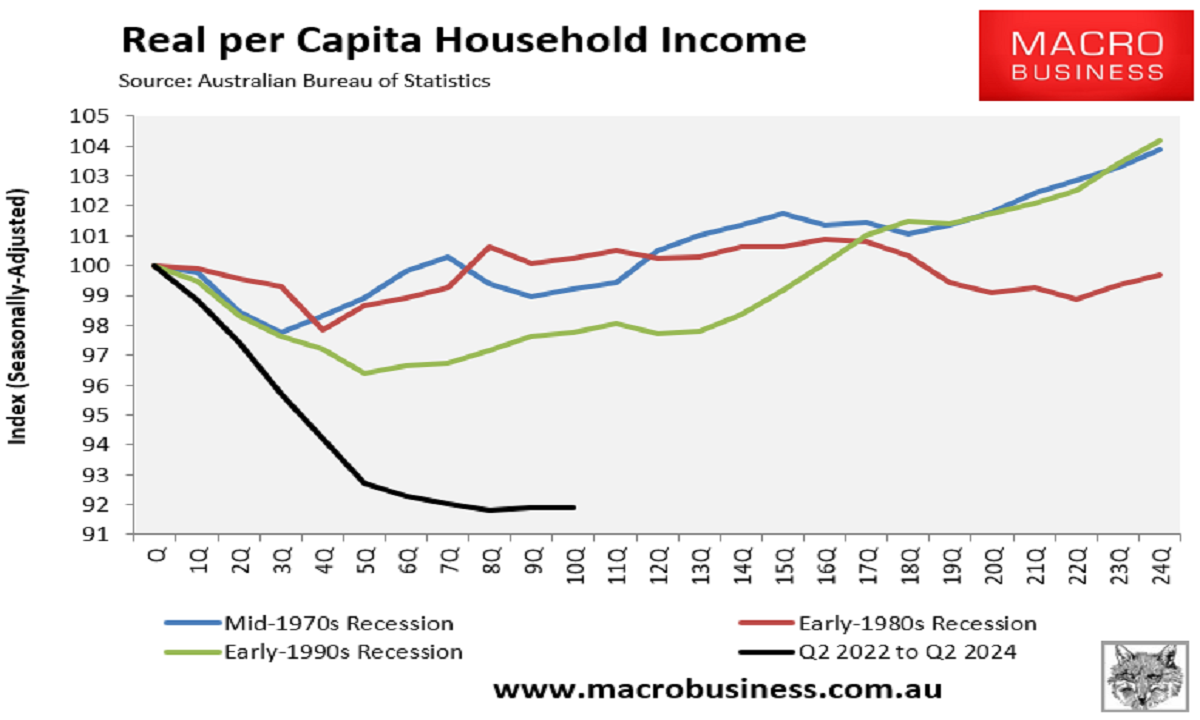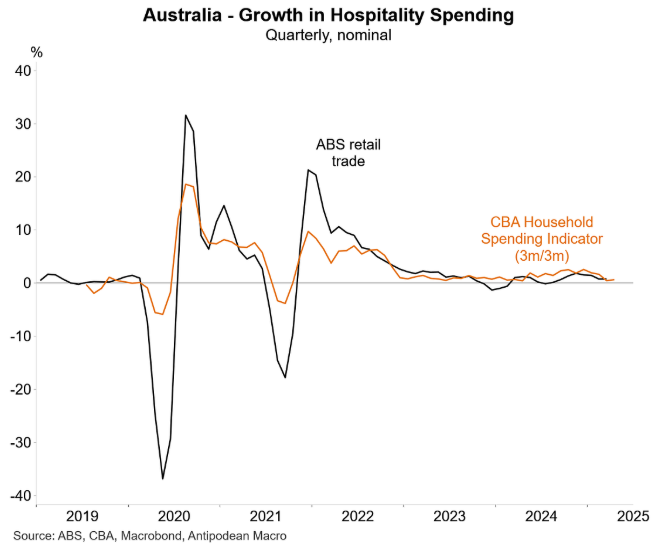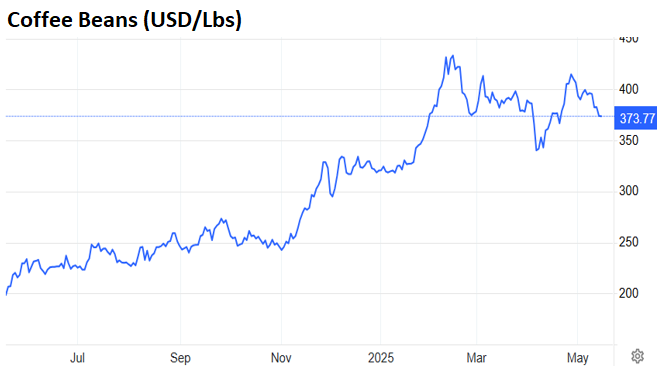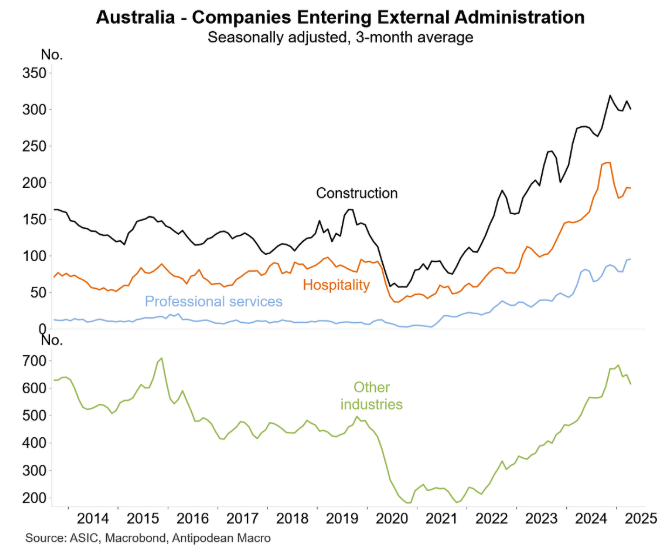Australia has too many cafes, and many will need to close down.
According to IBIS World, over 27,000 cafes and coffee shops operate in Australia. Competition is fierce, with multiple cafes often operating at the same locations. And there isn’t enough consumer demand to sustain them.
Australian households are caught in a cost-of-living crisis. Real per capita household disposable incomes have suffered their largest decline on record, falling 8% since mid-2022.

The notion of spending $6 on a barista-made coffee no longer stacks up for many households, so they are cutting back.
CBA’s latest Household Spending Insights survey shows Australians are cutting back on spending at hospitality venues, including cafes.

Meanwhile, the costs of running a cafe continue to soar. Over the past year, global coffee bean prices have more than doubled in Australian dollars. Rent, food ingredients, energy, labour, insurance, and other costs have all risen sharply, putting pressure on cafe margins.

Rising costs and falling consumer demand can mean one thing: cafe closures.
The latest data from ASIC shows that around 2,000 hospitality businesses have gone bust this financial year, a 53% increase on last year and 126% higher than in 2023.

In an interview with ABC News, Andrew Low, CEO of Coffee Supreme, a supplier of roasted beans to over 600 cafés in Australia, highlighted the industry’s main issue.
“When I first got into coffee 15 years ago, there were probably about 5,000 speciality or independent cafes. While our love of coffee has increased over that time, it’s not five times bigger”, Low said.
“The average cafe used to do about 500 cups a day. Now it’s doing 300 cups a day. At the same time, the costs have doubled, so the margins in cafes have shrunk on average”.
“Supply is outstripping demand, and that’s making everyone lose a bit of money. We have too many cafes to support the needs”, he says.
Cafes have responded to rising costs by raising their prices. It is common to pay $20 or more for a simple avocado on toast or more than $30 for a big breakfast or chicken parmigiana.
Articles frequently suggest that Australians pay too little for coffee and that the price will soon climb to $7 or more.
However, such cost inflation would only lead to demand destruction. Few Australians are willing or capable of paying such high prices.
Many will go without coffee, prepare it at home, or buy cheaper machine-made coffee from a convenience store or petrol station.
Suresh Manickam, CEO of Restaurant & Catering Australia (R&CA), didn’t mince words by stating, “We are facing one of the toughest environments for the industry in recent years”.
Australia’s twenty-year cafe boom has come to an end. What follows is an almighty bust as the number of cafes operating adjusts downwards to match demand.
Charging $7 for a coffee will further reduce consumer demand and hasten the crash.

